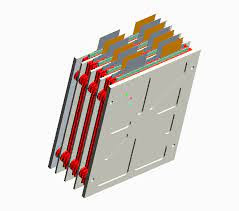Popular posts from this blog
ev training
Ex10S958 Ex10S959 Ex10S960 Ex10S961 Ex10S962 Ex10S963 Ex10S964 Ex10S965 Ex10S966 Ex10S967 Ex10S968 Ex10S969 Ex10S970 Ex10S971 Ex10S972 Ex10S973 Ex10S974 Ex10S975 Ex10S976 Ex10S977 Ex10S978 Ex10S979 Ex10S980 Ex10S981 Ex10S982 Ex10S983 Ex10S984 Ex10S985 Ex10S986 Ex10S987 Ex10S988 Ex10S989 Ex10S990 Ex10S991 Ex10S992 Ex10S993 Ex10S994 Ex10S995 Ex10S996 Ex10S997 Ex10S998 Ex10S999 Ex10S1000 Ex10S1001 Ex10S1002 Ex10S1003 Ex10S1004 Ex10S1005 Ex10S1006 Ex10S1007 Ex10S1008 Ex10S1009 Ex10S1010 Ex10S1011 Ex10S1012 Ex10S1013 Ex10S1014
PV Panel recycling technologies
Solar power is booming, with millions of metric tons of solar panels being produced each year. A panel has a projected lifespan of about 25 years, which means that today’s new solar farms will go out of service in the late 2040s. Most of the weight in a solar panel, about 75 percent, is glass, aluminum, with 10 percent; wiring in a junction box, at 5 percent; and silicon, with just 3.5 percent. Dedicated recyclers are needed, the authors write, to do a more thorough job of recycling all the components of a panel—including the crystalline silicon in the photovoltaic cells themselves. Silicon wafers account for about half the cost of a panel, as well as over half the energy and carbon footprint of manufacturing a panel. But silicon isn't currently being targeted for recycling much because the recovered silicon isn't pure enough to go straight back to a wafer manufacturer. Studies show that the impurity levels are an important issue during the recycling processes. Th...

